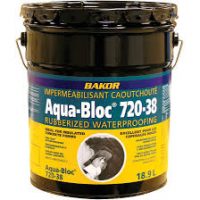There can be a number of causes of the flooding but water in your home can damage your foundation, structure, drywall, roofs, ceiling, your carpeting, flooring, belongings and the wooden beams of your house. It will also have a negative impact on the air quality of your home and cause the onset of moulds and mildew leading to infections and illnesses.
If your basement or home is flooded, you need to start the process of evacuating the water from your basement fast and start the cleaning up and drying process. Before you dive into a DIY, it is recommended to take the advice of a profession and let professionals handle the situation.
Although you may feel you are fully equipped to do the job, you may not have the expertise or the experience to do it correctly. Once the cleaning up process is started and the water is evacuated, you will need to find the reason behind your flooded basement and take proper steps to waterproof your home against any further flooding and leaks.
Step 1: Finding the source of Problem
The step you need to take if you are facing flooding in your basement is to find the source from where the water is coming into the basement. Most probable sources are windows, seams between the floor and wall and cracks in your walls. The accumulated water in the window wells is the most common source of basement flooding. This step is the most important step but it can take some time in finding the source of the leak depending upon the amount of water in your basement and the ways of patching up the leak. Once you have identified the source of your leak, you have to find a way to patch it temporarily so that when you initiate the drying and clean-up process, more water does not pour into your basement. You should remove all the furniture from your basement and the flooring before you start the clean-up process of your basement. Some of the major reasons for flooding of basements are due to heavy rains, clogged rain gutters and drain and even sudden snowmelt. In order to avoid getting a flooded basement, you can take preventive measures to ensure that you are safe from any basement flooding.
Step 2: Preparing for the Cleaning process Turn off electricity You need to turn off all the electrical systems and electricity which may be running into your basement to avoid getting hurt. Water is a good conductor of electricity and there are high chances of getting a shock if electricity is running into your flooded basement.
Protective clothing Wear protective clothing like goggles, rubber gloves, gumboots, and other protective gear to guard your body against any germs, mildew and contaminated water.
Proper Ventilation You can open the windows so that fresh air can enter the basement and you can also use battery-backed fans to fasten the process.
Step 3: Get the proper Equipment Ready
Get a Submersible Pump
In order to evacuate a lot of water from your basement, you will need to get a submersible pump. You can buy it, rent it or get professionals to help. The submersible pump is a powerful pump that comes in a waterproof shell and can be attached toa garden hose to pump out the water. The submersible pump works well submerged in the water, so if the water is more than a few feet deep, you will need to submerge the pump into the water and tie it with a heavy-duty nylon rope. You will need a large diameter and long garden hose so that the pump is able to pump out more water quickly out of your basement. You will also need a generator to run the pump and a heavy-duty extension cord to connect the generator to the pump since you cannot use the basement electrical system for running the pump.
If you are using the submersible pump, secure the connection between the extension cord and your pump before putting your pump into the flooded basement. You will also have to make sure that the connection is secure and waterproof. You can also loop the cords of your pump through the ceiling beam so that they remain unaffected by the water in your basement. Also, try to find the longest garden hose and attach it to the pump. Make sure to positing the hose away from your home and point it to a nearby gutter or sewer so that all the water is drained away and does not flow back towards your house.
Dry/Wet Vacuum If the amount of water is only a few inches deep, you can use a dry/wet vacuum to pump out the water. But these vacuums are connected to a tank that can suck up to 5 gallons of water. You will need to drain the tank outside, every time the tank fills up. For minor flooding, this is an efficient and economical method and works very well, but going up the basement stairs to drain the tank every time can be exhausting.
Step 4: Pumping out the water
Don’t remove the water quickly Never try to pump out the water too fast out of your basement. You may feel it is the right thing to do, to pump out water quickly, but it is not. Hydrostatic pressure is created in the soil around the walls of your basement and your foundation which forces the water to move from an area of high pressure to low pressure. It is possible that there may be high hydrostatic pressure outside and the water inside your basement may be balancing the pressure outside. If you pump out the water quickly from your basement, it is possible that more water will pour in and your walls may crack and crumble due to the intensity of the hydrostatic pressure outside the walls of your basement. In order to safely evacuating the water from your basement, make sure that the water outside your house has receded and then start pumping out the water using a submersible pump or dry/wet vacuum.
Use of Gasoline Pump You can also use a gasoline pump to pump out the water but make sure it is done in a ventilated and airy basement. If the basement does not have proper ventilation, it is not recommended to use a gasoline pump because using this pump will create fumes and due to lack of oxygen, it will create carbon mono oxide. It can lead to health hazards and carbon monoxide poisoning.
Checking the water level After you have removed about 1/3rd of the total water, ensure that no more water is pouring into the basement. Check all seams, windows, and cracks. If more water is pouring in, the clean-up will be a never-ending process. Mark the wall to see the amount of water which has been pumped out of the basement. then take a break and check if more water has leaked into the basement by checking the mark on the wall. If you don’t find the mark, it is evident that more water is pouring in and you need to locate the source. If the water level has remained unchanged, start evacuating the water. Stop if you notice cracks If you notice any cracks and crumbling while pumping out the water, you should stop pumping out the water immediately as it may lead to more serious damage to your walls and structure.
Step 5: Cleaning the Mess Once you have removed the water from your basement, the next step is to clean the entire area and dry everything. You will also need to sanitize the area so that interior air quality is maintained and mould growth is prevented. Removing Porous things The firs
Washing the walls You will need to wash the walls and remove all the dirt before the dirt is dried and hardened. You will also need to get rid of all the mud and debris which gets accumulated on the basement floor with a shovel. It is recommended to do it fast while it is damp.
Checking for leaks and cracks Scrutinize your basement walls and floor for all kinds of cracks and leaks and repair them immediately to prevent any type of future flooding of your basement. If you notice cracks in your foundation or the walls of the basement which are likely the cause of flood in your basement, you should find what is causing these cracks. If the cracks have occurred due to the accumulation of hydrostatic pressure in and around your basement, repairing the external drainage system of your house will help your cause. If the cracks have appeared due to structural problems then using straps and anchor bolts you can fix the connection and footing and seal all the gaps. You will have to repair and heal the cracks but the root cause behind the cracks will be solved with the above fixes and it prevent your basement from flooding.
Step 6: Taking Preventive Measures Enduring a flooded basement for once is way too much physically exhausting and having to spend your hard-earned money on fixing your furniture and personal belongings is even worse. You have to ensure that you never get another flooded basement in your home. You need to take preventive measures so that it never happens again.
Hiring Professionals
You can hire a professional waterproofing expert and let him examine your basement and structure so that you will know, what all needs to be repaired. You can also invest in a waterproofing service as it will be a one-time investment and will save you from any flooded basements in the future. Educating Yourself Apart from the professional help, you can learn about the various Do’s and Don’ts of maintaining a waterproof basement and ensuring that all the precautions are taken care of.
Interior Waterproofing Interior waterproofing of your basement is usually easy and affordable. You start by looking for any holes or cracks in the walls, windows, doors, and floor of your basement. Aft5er locating these cracks, you properly seal them and make them watertight with the use of special sealants. These sealants are effective in waterproofing your basement and come with extended guarantees. They also keep the humidity level down of your basement which prevents condensation. This will help in keeping your basement dry and free from moisture. You can coat them on the basement walls and floors. But these sealants will not prevent the root cause of the leaks in your basement is usually found outside your house.
Step 7: Working with Professionals Although you can remove the water on your own from your basement, it will require a lot of physical strength, equipment and expertise to do it correctly. Also, it will take up a lot of your time for the entire cleaning process and drying your basement to the core. It is much easier and convenient to work with professionals who will do all the dirty work for you. You use the experience and expertise of waterproofing professions and contact at www.canadawaterproofers.com. We have very economical prices and after handing your home in our hands, we ensure to give you a waterproofed, clean and dry basement back to you. If you are tired of your attempts of pumping the water out of your basement or for keeping the moisture away from your basement, we can help you in a professional way to remove the water from your basement, repair any cracks and leaks and finding the interior as well as exterior waterproofing solutions for your home.











